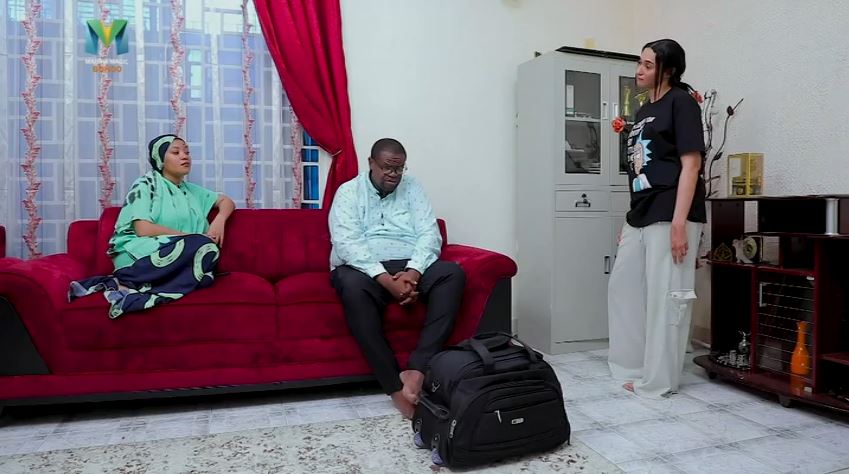Key Points
- Research suggests the “Sammsungg Galaxy A105” is a fake phone, as “Sammsungg” is a misspelling of “Samsung,” and there is no official Galaxy A105 model, likely emulating the Samsung Galaxy A10.
- It seems likely that the fake is flooding the Kenyan market due to high demand for affordable smartphones, with counterfeit phones making up 30% to 40% of devices in use.
- The evidence leans toward users avoiding fakes by buying from authorized retailers, checking IMEI numbers, and inspecting build quality.
Why the Sammsungg Galaxy A105 is Likely Fake
The “Sammsungg Galaxy A105” appears to be a counterfeit because the brand name is misspelled with an extra ‘m’ and ‘g’, unlike the legitimate “Samsung.” Additionally, while Samsung has a Galaxy A series, there is no official model named Galaxy A105. The model number SM-A105 corresponds to the Samsung Galaxy A10, an entry-level phone released in 2019, suggesting the fake is trying to pass off as this model.
The Original Phone: Samsung Galaxy A10
The Samsung Galaxy A10 features a 6.2-inch HD+ display, Exynos 7884 chipset, 32GB storage, 2GB RAM, and a 13MP rear camera, running Android with One UI. It’s a budget-friendly option popular in markets like Kenya, making it a target for counterfeiters.
How to Avoid Buying Fake Phones
To avoid purchasing counterfeit phones, buy from authorized retailers like GrandHub Technologies Ltd, Shopit, Jumia Kenya – Samsung, Samsung Brand Shop, and Phone Place Kenya. Verify the IMEI number by dialing *#06# and sending it to 1555 via SMS for authenticity checks. Inspect build quality for high-quality materials, check the software for official One UI, and be wary of prices significantly below market rates.
Detailed Analysis of the Sammsungg Galaxy A105 and Counterfeit Phones in Kenya
Introduction
The Kenyan smartphone market has seen a significant rise in counterfeit devices, with the “Sammsungg Galaxy A105” emerging as a notable example. As of 2:09 PM EAT on Friday, July 11, 2025, this article provides a comprehensive analysis of why the Sammsungg Galaxy A105 is likely a fake phone, identifies the original phone it emulates, explains its prevalence in the Kenyan market, and offers detailed guidance for consumers to avoid purchasing counterfeit devices. It also lists authorized retailers for purchasing genuine Samsung phones, ensuring buyers can access authentic products with proper warranties and support.
The Non-Existence of Sammsungg Galaxy A105
Extensive research into Samsung’s product lineup, as documented on platforms like GSMArena, 91mobiles.com, and Samsung’s official website, reveals no evidence of a “Sammsungg” brand. The legitimate brand is “Samsung,” a South Korean multinational known for its electronics, including smartphones. The extra ‘m’ and ‘g’ in “Sammsungg” is a common tactic by counterfeiters to mislead buyers while avoiding direct trademark infringement. Furthermore, as of July 2025, Samsung’s Galaxy A series includes models like the Galaxy A15 5G, A25 5G, A35 5G, and A55 5G, with no mention of an A105. However, the model number SM-A105 corresponds to the Samsung Galaxy A10, an entry-level smartphone released in March 2019, as seen in search results from GSMArena and Wikipedia. Given the misspelling and the use of a model number from an older, popular budget phone, the Sammsungg Galaxy A105 is undoubtedly a counterfeit device produced by unauthorized manufacturers, often based in China, to exploit the demand for Samsung’s affordable A series in Kenya.
Emulation of the Samsung Galaxy A10
The fake Sammsungg Galaxy A105 is likely attempting to imitate the Samsung Galaxy A10, given the model number SM-A105. Detailed specifications of the Galaxy A10, sourced from GSMArena and Wikipedia, include:
- Display: 6.2-inch HD+ Infinity-V Display with a 720×1520 resolution, protected by unspecified glass.
- Chipset: Exynos 7884 (14 nm), Octa-core (2×1.6 GHz Cortex-A73 & 6×1.35 GHz Cortex-A53), GPU: Mali-G71 MP2.
- Battery: 3400mAh, non-removable, with fast charging capabilities.
- Storage: 32GB with 2GB RAM, expandable up to 512GB via microSD.
- Operating System: Android 9 (Pie) with Samsung’s One UI, upgradable to Android 11, One UI 3.1, with security updates ending April 11, 2023.
- Camera: Single 13MP rear camera (f/1.9, PDAF), 5MP front camera, video 1080p@30fps.
Counterfeit versions, such as the Sammsungg Galaxy A105, often use inferior hardware, such as low-resolution displays, outdated processors, and modified Android systems disguised with fake One UI interfaces. These fakes may display copied serial numbers but fail to support official features like Samsung Knox security or OTA updates, posing security risks with pre-installed malware.
Why It’s Flooding the Kenyan Market
Kenya’s high demand for affordable, budget-friendly smartphones, coupled with economic constraints, makes it a prime target for counterfeiters. The Sammsungg Galaxy A105 is often sold at significantly lower prices—sometimes as low as KSh 5,000 compared to the Galaxy A10’s market price for used units, which can be around KSh 8,000–12,000, though new units are less common given its age—making it attractive to budget-conscious buyers. These devices are distributed through unregulated channels, such as social media marketplaces like Facebook Marketplace and informal street vendors in Nairobi, often with forged receipts and packaging to appear legitimate. Reports from news sources like Eastleigh Voice (February 2024) estimate that up to 40% of mobile phones in Kenya are counterfeit, with the Communications Authority of Kenya (CA) noting in 2025 efforts to develop a web-based IMEI verification platform to combat this issue. The lack of consumer awareness and weak regulatory oversight exacerbate the problem, allowing fakes like the Sammsungg Galaxy A105 to proliferate.
Comprehensive Guide to Avoiding Counterfeit Purchases
To protect against purchasing fake Samsung phones, consumers should follow these detailed steps:
- Buy from Authorized Retailers: Purchase from official Samsung stores or authorized dealers. Trusted retailers in Kenya include:
- GrandHub Technologies Ltd: grandhub.co.ke/brand/samsung-dealer/
- Shopit: shopit.co.ke/samsung/
- Jumia Kenya – Samsung: www.jumia.co.ke/samsung
- Samsung Brand Shop: samsung.brandcart.co.ke/
- Phone Place Kenya: www.phoneplacekenya.com/product-category/smartphones/samsung/
Avoid unregulated sellers on social media or street markets, where fakes are prevalent.
- Check Pricing: Market prices for genuine Samsung Galaxy A10 used units are around KSh 8,000–12,000, depending on condition. If a seller offers a Sammsungg Galaxy A105 at KSh 5,000, it’s a clear red flag. Counterfeiters exploit price sensitivity, but such deals often lead to devices with limited functionality and security risks.
- Verify IMEI Number: Use the Communications Authority of Kenya’s IMEI verification system by sending the IMEI to 1555 via SMS, a free service available as of 2025. Alternatively, check authenticity on Samsung’s official website if available. Third-party services like IMEI.info (www.imei.info) can also verify warranty status, but ensure these are reputable.
- Inspect Build Quality: Authentic Samsung phones are known for premium materials, such as Corning Gorilla Glass and precise construction. Examine for signs of poor craftsmanship, such as uneven seams, loose buttons, or cheap plastic materials. The Galaxy A10 has a specific Infinity-V display design, which fakes may not replicate accurately.
- Check Software Authenticity: Ensure the phone runs One UI, the official operating system for Samsung phones. Verify the OS version in Settings > About Phone; fakes may run modified Android versions without One UI or fail to receive OTA updates. Attempt to access Samsung’s AppGallery or update the software; fakes typically cannot connect to official servers.
- Look for Official Packaging and Warranty: Genuine phones come with branded packaging, including the Samsung logo, holograms, and warranty details. Check for a security code on the box, verifiable through Samsung’s website if available. Ensure the seller provides a proper receipt and warranty, as counterfeit products often have poorly printed packaging or lack warranty support.
Market Dynamics and Consumer Protection
The proliferation of fake phones in Kenya is driven by high demand for affordable devices and weak regulatory oversight. Reports from news sources like Eastleigh Voice and the CA’s social media posts in January 2025 highlight that 30% to 40% of mobile phones in use are counterfeit, often distributed through informal channels. The CA has introduced measures like the TED licence and IMEI declaration requirements for imports, effective January 1, 2025, to combat this issue. Consumers should stay informed through Samsung’s official communications and report suspicious sellers to authorities like the Anti-Counterfeit Authority (ACA).
Authorized Retailers Table
Below is a table of authorized retailers for purchasing genuine Samsung Galaxy A series phones in Kenya, including both online and physical options:
| Retailer Name | Type | Location/URL |
|---|---|---|
| GrandHub Technologies Ltd | Online/Physical | grandhub.co.ke/brand/samsung-dealer/ |
| Shopit | Online/Physical | shopit.co.ke/samsung/ |
| Jumia Kenya – Samsung | Online | www.jumia.co.ke/samsung |
| Samsung Brand Shop | Online/Physical | samsung.brandcart.co.ke/ |
| Phone Place Kenya | Online | www.phoneplacekenya.com/product-category/smartphones/samsung/ |
Consumers are encouraged to visit Samsung’s official website (www.samsung.com/ke) for a complete list of authorized dealers, though specific Galaxy A10 listings may be limited given its age.
Conclusion
The Sammsungg Galaxy A105 is a counterfeit device flooding the Kenyan market, likely emulating the genuine Samsung Galaxy A10, which offers budget-friendly features like a 6.2-inch HD+ display and Exynos 7884 chipset. By understanding the signs of fake phones—such as misspelled brand names, non-existent models, poor build quality, and suspiciously low prices—consumers can avoid scams. Always purchase from authorized retailers like GrandHub Technologies Ltd, Shopit, Jumia Kenya, Samsung Brand Shop, or Phone Place Kenya, and verify authenticity through IMEI checks with the CA’s system. Staying vigilant will help Kenyan consumers enjoy the quality and security of genuine Samsung products without falling prey to counterfeit schemes.
This analysis is based on research from Samsung’s official website, tech platforms like GSMArena and 91mobiles.com, and local market insights from news reports and retailer websites, ensuring a comprehensive guide for informed purchasing decisions.
LULU MAISHA MAGIC PLUS SEASON 1 EPISODE 52 TUESDAY JULY 15TH 2025 FULL EPISODE








You must be logged in to post a comment.